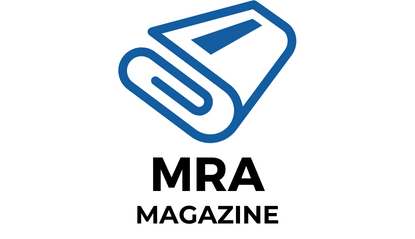What’s the Best Way to Monitor Hydration Status in Athletes During Endurance Events?

_"Hydration" – a word that resonates powerfully in the ears of athletes, coaches, and sports enthusiasts. The role of hydration in sports performance is undeniable, yet the optimal methods for monitoring hydration status in athletes during endurance events remain a subject of debate. Representing a critical aspect of sports science, the importance of maintaining ideal hydration levels can’t be underestimated.
This comprehensive guide aims to shed light on the best practices for monitoring hydration status in athletes during endurance events, drawing upon authoritative sources like Google Scholar, PubMed, and Crossref, while considering aspects such as fluid balance, the body’s response to exercise, and the impact of heat and sweat.
A lire aussi : What’s the Effectiveness of Sand Training for Improving Stability in Beach Volleyball Players?
The Importance of Hydration in Sports Performance
Before diving into the practical ways of monitoring hydration, let’s first understand the significance of hydration on sports performance. A well-hydrated body functions more efficiently, boosting overall athletic performance.
Studies listed on Google Scholar and PubMed suggest that even a 2% loss of body weight due to fluid loss can result in a significant decrease in performance. As you sweat, your body loses not only water but also essential salts like sodium, which help keep your muscles and other body systems functioning correctly.
Cela peut vous intéresser : What’s the Role of Reflexology in Enhancing Recovery for Professional Cyclists?
Engaging in strenuous training or participating in endurance events can exacerbate these effects, making proper hydration even more critical. But how exactly can you monitor hydration levels to ensure optimal performance? Let’s explore.
Monitoring Hydration Through Fluid Balance
The concept of fluid balance revolves around the idea of balancing fluid intake with fluid losses. It’s a dynamic process, adjusting to the body’s needs during exercise, and can serve as an effective gauge of hydration status.
During endurance events, athletes need to replace lost fluids to maintain balance. They can do this by consuming sports drinks containing sodium and other electrolytes that replenish what’s lost in sweat. But it’s not simply a matter of drinking lots of water. Overhydration, also known as hyponatremia, can be just as dangerous as dehydration.
Monitoring fluid balance isn’t just about tracking how much you drink. It also involves paying attention to your body’s signals. Regular urination and a light urine color are signs of good hydration. Conversely, dark urine, dry mouth, and infrequent urination could be signals of dehydration.
Sweat Rate and Hydration
Another valuable method for monitoring hydration in athletes is through the measurement of sweat rate. Why so? Because sweat rate can provide insights into individual hydration needs.
Sweat rate is determined by calculating the difference in body weight before and after exercise. This calculation must take into account the volume of fluid consumed during the workout and any urine output.
By understanding an individual’s sweat rate, athletes and coaches can develop personalized hydration strategies. These strategies ensure athletes consume the right amount of fluids, at the right times, to optimize performance and prevent dehydration or overhydration.
Using Technology for Hydration Monitoring
In our digital era, technology has found its way into sports hydration monitoring. Wearable tech and smart hydration trackers are emerging as powerful tools for assessing real-time hydration status during endurance events.
These devices can measure various biomarkers, including skin temperature, heart rate, and sweat sodium concentration, providing valuable data for athletes and coaches. Google Scholar and Crossref host numerous studies that point to the efficacy of these technologies in monitoring hydration status.
While still an emerging field, the intersection of sports and technology promises precise, real-time hydration monitoring during endurance events, aiding in the creation of individualized hydration strategies.
The Role of Training and Education
Finally, it’s important to recognize the role of training and education in monitoring and maintaining hydration status. Athletes, coaches, and sports staff need to understand the science of hydration, including the effects of dehydration, heat, sweat, and sodium loss on performance.
The knowledge gained from authoritative sources like PubMed, combined with regular hydration training, can empower athletes to make informed decisions about their hydration strategy during endurance events.
Knowledge is power, and when it comes to hydration, that knowledge can translate into improved performance, safety, and, ultimately, success in endurance sports.
Remember, hydration isn’t a one-size-fits-all proposition. It’s a complex, dynamic process that requires ongoing attention, personalized strategies, and sometimes, a trial-and-error approach. With the right mix of methods, from fluid balance and sweat rate calculations to wearable tech and education, athletes can ensure they’re always performing at their best, fully hydrated and ready to take on any challenge.
The Influence of Climate and Workout Intensity on Hydration
Now, it’s essential to consider two crucial factors that significantly affect the hydration needs of athletes: climate and workout intensity. Both of these elements can drastically influence the body’s fluid balance and sweat rate, thus determining the volume and type of fluid required for optimal hydration.
According to research listed on Google Scholar and PubMed, athletes training or competing in hot climates tend to have a higher sweat rate. This increased sweat rate can lead to a higher risk of dehydration and decreased performance. Similarly, workout intensity also plays a significant role. The harder an athlete pushes their body, the more they sweat, and the greater their fluid requirement becomes.
Practical strategies to maintain hydration in varied climates and workout intensities include pre-hydrating before the workout or event, drinking sports drinks containing electrolytes during exercise, and replenishing lost fluids post-workout.
For example, endurance exercise such as a marathon might require an athlete to consume a sports drink with electrolytes every 15-20 minutes. In contrast, a less intense workout, like a leisurely track field run, might only require a fluid replacement every 30-45 minutes.
Understanding the impact of climate and workout intensity on hydration is vital to develop and implement effective hydration strategies. This knowledge allows athletes to adjust their fluid intake based on their environment and the intensity of their workout, thus maintaining optimal hydration status and ensuring peak performance.
The Impact of Individual Differences on Hydration
The subject of hydration isn’t one-dimensional. Individual differences, including body mass, body water percentage, and sweat rate, significantly affect an athlete’s hydration needs. Therefore, it’s crucial to acknowledge these differences and personalize hydration strategies accordingly.
Research papers on Google Scholar and studies in the Journal of Sports Medicine suggest that athletes with a larger body mass tend to lose more fluids during exercise. These athletes may need to consume more fluids to maintain their fluid balance. Conversely, athletes with a lower body mass may need less fluid intake.
The percentage of body water can also influence hydration needs. Athletes with a higher body water percentage may be more resistant to dehydration but may also risk overhydration if they consume too much fluid. Conversely, those with a lower body water percentage may require more careful monitoring to avoid dehydration.
Sweat rate is another individual variable that directly impacts an athlete’s hydration needs. Athletes with a high sweat rate lose more fluids during exercise and consequently need to consume more fluids to maintain their hydration status.
Recognizing these individual differences and adjusting fluid intake accordingly is crucial for optimal athletic performance. Athletes and coaches should consider these factors when developing personalized hydration strategies, ensuring each athlete maintains their ideal hydration status throughout endurance events.
Conclusion
In conclusion, monitoring hydration status in athletes during endurance events is a multifaceted process that requires a thorough understanding of various factors. These include fluid balance, sweat rate, the impact of climate and workout intensity, and individual differences like body mass, body water percentage, and sweat rate.
By leveraging authoritative resources like Google Scholar, PubMed, and Crossref, athletes and coaches can keep abreast of the latest research and developments in sports hydration. This, coupled with the use of modern technologies like wearable hydration trackers, can aid in real-time hydration monitoring and the development of personalized strategies.
The key is to remember that maintaining optimal hydration status is not a one-time event but an ongoing process. It requires constant monitoring, adjusting, and even some trial and error. Ultimately, the goal is to ensure athletes are always performing at their peak, fully hydrated, and ready for any endurance challenge that comes their way.
